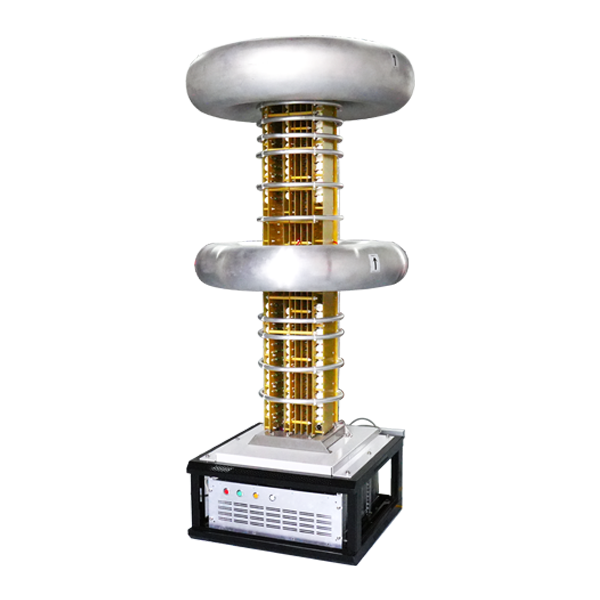Analysis of Energy Conversion Efficiency and Environmental Friendliness of High Voltage AC Power Supplies
Abstract: With the advancement of technology and the development of power electronics, high voltage AC power supplies are increasingly used in various fields such as industry, transportation, and communication. However, the energy conversion efficiency and environmental impact of high voltage AC power supplies have always been a focus of attention. This paper will conduct an in-depth analysis of the energy conversion efficiency and environmental friendliness of high voltage AC power supplies from a professional perspective.
I. Introduction
With the progress of science and technology and the development of power electronic technology, high-voltage AC power supplies are more and more widely used in industrial, transportation, communication and other fields. However, the energy conversion efficiency of high-voltage AC power supply and its impact on the environment have always been the focus of attention. This paper will analyze the energy conversion efficiency and environmental friendliness of high-voltage AC power supply from a professional point of view.
II. Analysis of Energy Conversion Efficiency of High-Voltage AC Power Supply
1. Theoretical Basis
Energy conversion efficiency is an important index to measure the performance of power supply, which indicates how much of the input energy is effectively converted into output energy. For high-voltage AC power supplies, their energy conversion efficiency is mainly affected by factors such as input voltage, output voltage, load power factor, switching device loss, and magnetic component loss.
2. Topological Structure of High-Voltage AC Power Supply
The topological structure of high-voltage AC power supply has an important influence on its energy conversion efficiency. Common topological structures include push-pull, half-bridge, and full-bridge. Among them, the full-bridge topology has the advantages of high output voltage and small current ripple, but the switching device loss is large; while the push-pull and half-bridge topologies have the advantage of smaller switching device loss, but the output voltage is lower. Therefore, when choosing the topological structure of a high-voltage AC power supply, it is necessary to make trade-offs based on specific application scenarios and performance requirements.
3. Control Strategy of High-Voltage AC Power Supply
The control strategy of high-voltage AC power supply is also an important factor affecting its energy conversion efficiency. At present, common control strategies include pulse width modulation (PWM), phase shift control (PS), and frequency modulation (FM). Among them, PWM control strategy has the advantages of fast dynamic response and stable output voltage, but the switching frequency is high, which may lead to greater switching losses; while PS and FM control strategies have lower switching frequencies and smaller switching losses, but the dynamic response is slower. Therefore, when choosing the control strategy of a high-voltage AC power supply, it is necessary to comprehensively consider factors such as dynamic response, output voltage stability, and switching loss.
III. Environmental Friendliness Analysis of High-Voltage AC Power Supply
1. Electromagnetic Compatibility (EMC)
High-voltage AC power supplies generate electromagnetic interference (EMI) during operation, which may adversely affect surrounding electronic equipment and systems. Therefore, high-voltage AC power supplies must meet relevant EMC standards to reduce their impact on the surrounding environment during design.
2. Power Factor Correction (PFC)
High-voltage AC power supplies usually use uncontrolled rectifiers or phase-controlled rectifiers as the input stage, and the input current waveforms of these rectifiers are severely distorted, resulting in low power factor. Low power factor increases the reactive power demand of the power grid, thereby increasing the loss and environmental pollution of the power grid. To improve the power factor of high-voltage AC power supplies, PFC technology can be used for correction. PFC technology can reshape the input current into a sine wave and synchronize it with the input voltage, thereby improving the power factor and reducing harmonic pollution.
3. Thermal Design
High-voltage AC power supplies generate a large amount of heat during operation, and if the thermal design is unreasonable, it may lead to equipment overheating damage or fire and other safety accidents. Therefore, the thermal design of high-voltage AC power supplies needs to consider factors such as the thermal load, cooling method, and cooling materials to ensure that the equipment operates normally within the specified temperature range. At the same time, adopting efficient thermal design can also reduce the energy consumption and temperature rise of the equipment, further improving its energy conversion efficiency and environmental friendliness.
IV. Conclusion
This paper conducted an in-depth analysis of the energy conversion efficiency and environmental friendliness of high-voltage AC power supplies from a professional perspective. The research results show that by optimizing topological structure, control strategy, and thermal design, etc., the energy conversion efficiency of high-voltage AC power supplies can be improved and their impact on the environment can be reduced. In the future, with the continuous emergence of new materials and devices and the development of power electronics technology, it is believed that the performance and application range of high-voltage AC power supplies will be further expanded and improved.




















